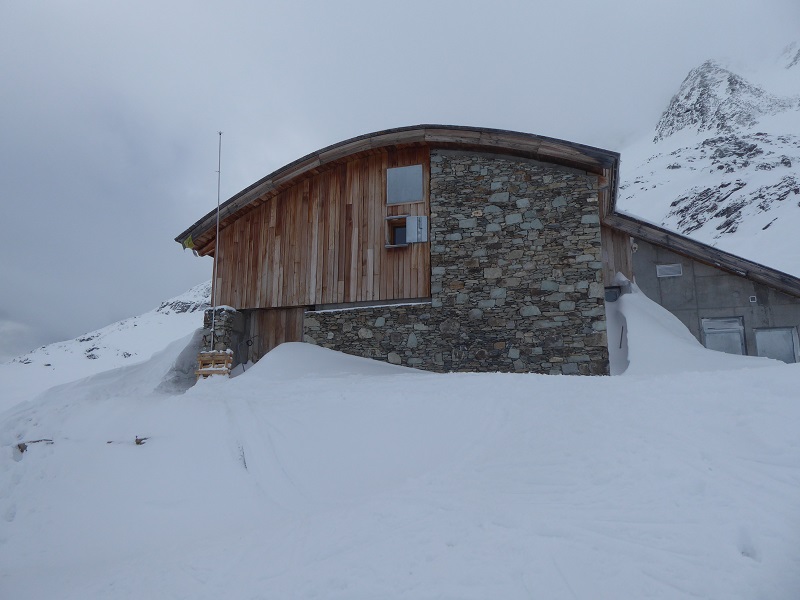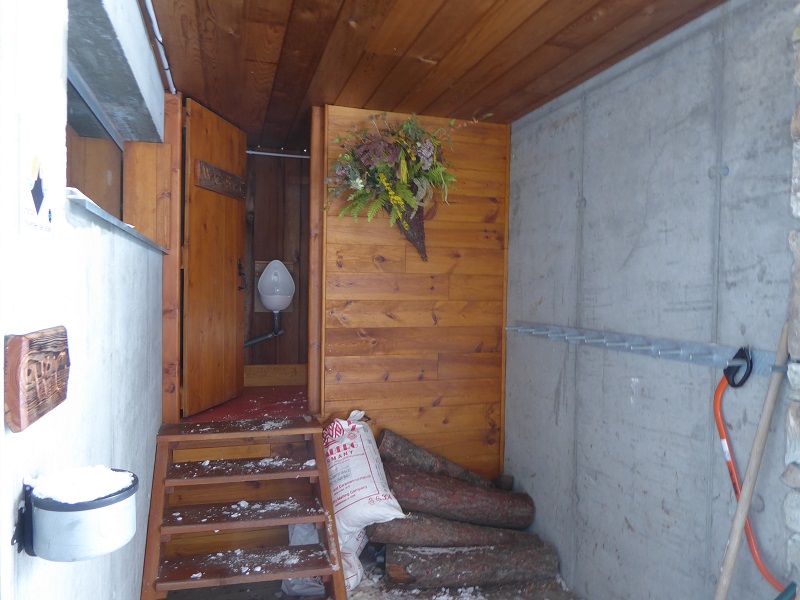
At the end of my first week in the Vanoise the weather improved slightly and we skied past the Fond d’Aussois hut which is only staffed in the summer but has a winter room. Outside the front entrance, which was reached through a corridor of snow, was an immaculate composting toilet.

In the Alps human waste disposal and provision has moved on considerably from the days when the toilet was often a hole in a plank overhanging some void and human waste provided food for choughs. Composting toilets are now to be found in many huts and provide a relatively cheap and effective means of breaking down human waste and avoiding disease.
So why has the Loch Lomond and Trossachs National Park Authority not developed a plan to install composting toilets in its camping management zones and address the issue of human waste disposal? Its far far cheaper to install composting toilets in remoter areas without sewerage systems but the LLTNPA never learned the lessons from the creation of the campsite at Loch Lubnaig where the cost of installing facilties which met the Scottish Environmental Protection Agency Standards led to costs soaring. Instead, its carried on with the same model, first at Loch Chon and now at Loch Achray where a new campsite is due to open in May. The cost of the Loch Lubnaig toilets does much to explain why the excellent Five Lochs Management Plan, which set out provision of new facilities including toilets in areas popular with visitors, was in effect abandoned and the cost of the Loch Chon and Loch Achray toilets explains why the LLTNPA has failed to improve toilet provision elsewhere.
In fact, as part of the Five Lochs Management Plan, the LLTNPA did investigate the possibility of installing composting toilets but according to their Chief Executive in an email to Strathard Community Council:
“The experience in Scotland is that due to the lack of consistently warm temperatures the waste is not always properly broken down and so removal of the partially composted human waste is hazardous and still requires to be disposed of with a licenced provider.”
Temperatures at the Fond d’Aussois hut are below freezing for much of the year – its at 2500m and far from consistently warm. Time for the LLTNPA to think again and learn from abroad. Composting toilets are the obvious solution to addressing problems of human waste in the Loch Lomond and Trossachs National Park, whether by day visitors – as alongside the path up the Cobbler – or by campers.
I designed the Corrour MBA bothy toilet, billed as the UKs most remote toilet, and co-authored a report for the Forestry Commission on the provision of toilets in rural areas. It’s true that neither composting toilets nor septic tanks “work” at low temperatures, and so disposal of human waste and ongoing maintenance are always problematic. It would be good to have some information as to how the toilets in the Alps overcome these difficulties. It may be that summer temperatures compensate for the winter.
I was aware there were some issues at Corrour but it is of course much colder than almost anywhere in the Lomond and Trossachs NP. I wonder if Alpine huts, most of which now have solar panels, use power from this to heat the waste?
I don’t know the situation in Vanoise, but the cold is not detrimental to the waste and even if the pile freezes the toilet can still be used, hence the use of Composting toilets in this type of situation.
Regarding Composting toilet provision in Scotland, I think there have been issues with design and keeping a check on numbers – a Composting toilet can only handle a certain amount of uses. If the pile is too wet, too dry or too cold, it won’t compost well. What they need to do is keep an eye on maintenance, visitor numbers and if their existing Composting toilets are being overloaded, build some more!
My understanding is that the power source (e.g. solar panels) in a composting toilet is used to drive a fan and create a movement of air that aids evaporation of the moisture, rather than to provide heat.